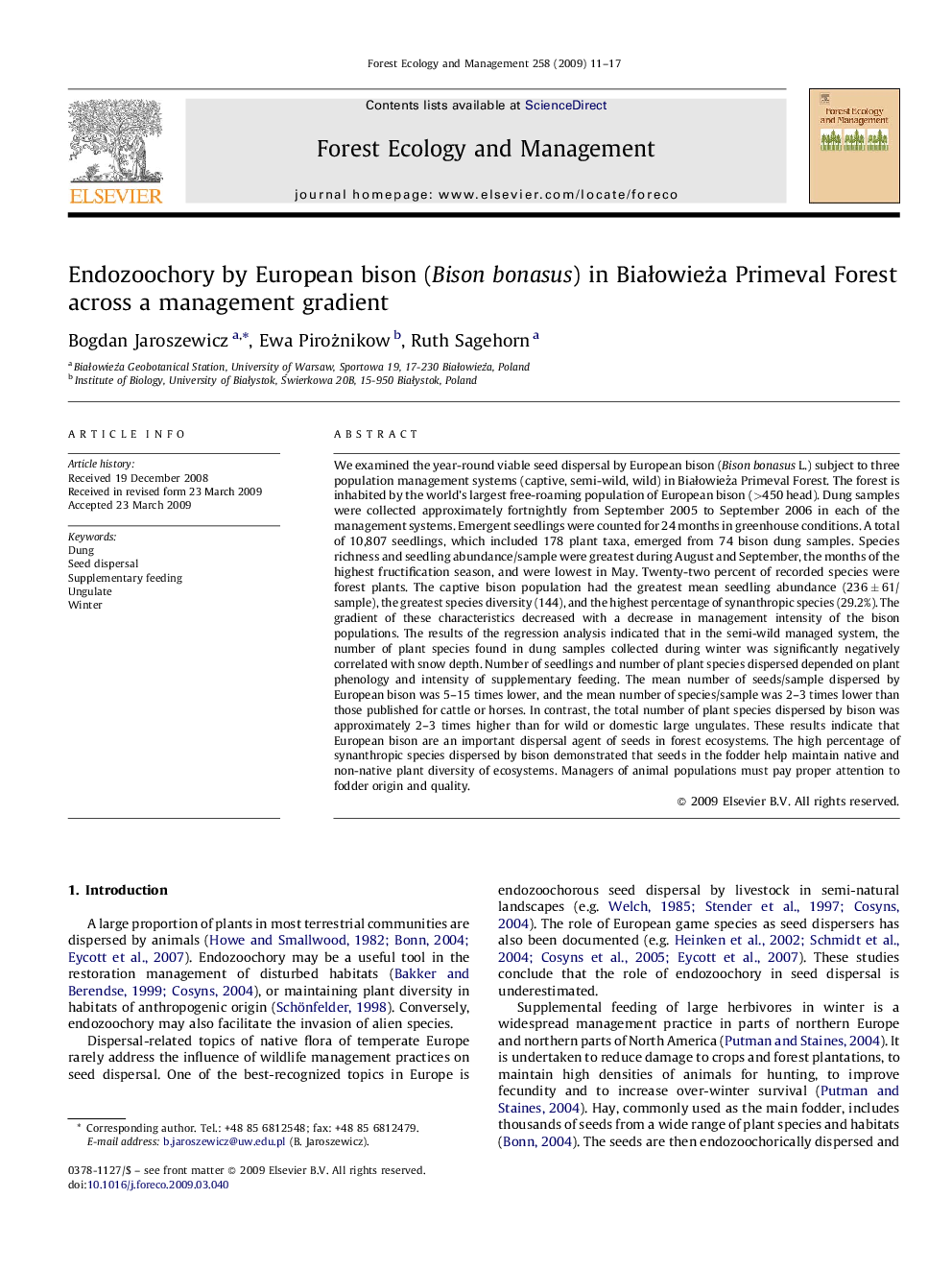| کد مقاله | کد نشریه | سال انتشار | مقاله انگلیسی | نسخه تمام متن |
|---|---|---|---|---|
| 89303 | 159338 | 2009 | 7 صفحه PDF | دانلود رایگان |

We examined the year-round viable seed dispersal by European bison (Bison bonasus L.) subject to three population management systems (captive, semi-wild, wild) in Białowieża Primeval Forest. The forest is inhabited by the world's largest free-roaming population of European bison (>450 head). Dung samples were collected approximately fortnightly from September 2005 to September 2006 in each of the management systems. Emergent seedlings were counted for 24 months in greenhouse conditions. A total of 10,807 seedlings, which included 178 plant taxa, emerged from 74 bison dung samples. Species richness and seedling abundance/sample were greatest during August and September, the months of the highest fructification season, and were lowest in May. Twenty-two percent of recorded species were forest plants. The captive bison population had the greatest mean seedling abundance (236 ± 61/sample), the greatest species diversity (144), and the highest percentage of synanthropic species (29.2%). The gradient of these characteristics decreased with a decrease in management intensity of the bison populations. The results of the regression analysis indicated that in the semi-wild managed system, the number of plant species found in dung samples collected during winter was significantly negatively correlated with snow depth. Number of seedlings and number of plant species dispersed depended on plant phenology and intensity of supplementary feeding. The mean number of seeds/sample dispersed by European bison was 5–15 times lower, and the mean number of species/sample was 2–3 times lower than those published for cattle or horses. In contrast, the total number of plant species dispersed by bison was approximately 2–3 times higher than for wild or domestic large ungulates. These results indicate that European bison are an important dispersal agent of seeds in forest ecosystems. The high percentage of synanthropic species dispersed by bison demonstrated that seeds in the fodder help maintain native and non-native plant diversity of ecosystems. Managers of animal populations must pay proper attention to fodder origin and quality.
Journal: Forest Ecology and Management - Volume 258, Issue 1, 30 May 2009, Pages 11–17